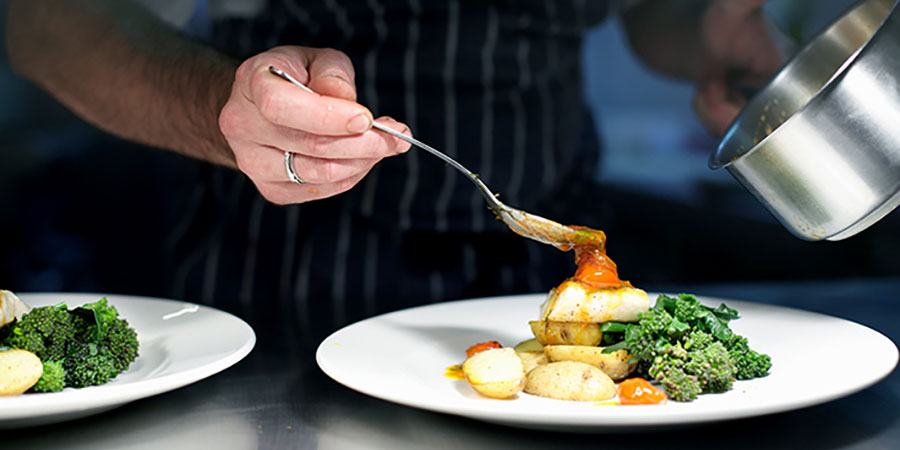5 Ways Your Restaurant Can Reduce Food Waste

Does your restaurant consistently waste food, thus wasting money that could be put to better use? If so, you should evaluate certain aspects of your business that could be causing this. These could be things that you’ve never thought of – like employee training methods and the items on your menu. If you don’t proactively make necessary changes, you’ll continue to throw away excess food, which could be detrimental to the future of your restaurant.
In this post, we’ll explain a few ways that you can combat food waste. Trust us – your wallet will thank you!
1. Update equipment
Do you have a freezer that frequently breaks, causing you to throw away spoiled ingredients? Or perhaps your current storage facility can’t fit all your items, forcing you to discard ingredients prior to their expiration date.
If either of these situations sounds familiar, you should identify which pieces of equipment are wasteful and invest money into repairing them or purchasing new equipment - why fix it when you can finance it, right? While these costs might seem hefty, they are worthwhile investments that will save you from continual waste-related issues. Without doing this, you could be discarding more food than you realize, and hurting your business’s finances in the process.
2. Reduce portions
If you notice that patrons can’t finish their meals, it might be a strong indicator that your portions are too large. Even though you don’t want customers to feel cheated, you also don’t want to serve outrageously portioned meals that get tossed in the trash.
To find a happy medium, meet with your restaurant’s chefs to appraise your portion sizing. This will ensure that you don’t over-purchase ingredients in the future, and your staff will know how to prepare the correct serving amounts.
3. Revise your menu
When running a restaurant, it is pivotal that you track which menu items aren’t consistent sellers. If you have to buy special ingredients for dishes that aren’t being prepared, they are likely going to waste. So, it might be time to give your menu a makeover!
Remove dishes that are not selling, and add menu items that you can prepare with ingredients that you are already purchasing. This will be a more effective way to make restaurant sales, without the risk of losing money on unused ingredients.
4. Store ingredients correctly
Like updating your equipment, you should make sure that your food is stored correctly. This means that you’ll need to verify that items are being stored at the correct temperatures and in the right form.
In addition, you should ensure that your staff is well-trained in food storage procedures. You and your team could be making unnecessary mistakes, simply because you are not paying attention to how you are storing food
5. Meet with your wholesale provider
Are you receiving too much of a certain item, or noticing that ingredients are not as fresh as they should be when they arrive? If so, you should discuss this with your wholesale partner. It is their job to meet your food delivery needs and should be able to revise any aspects of their wasteful processes. Communicating with them about their deliveries will hopefully fix any issues moving forward.
6. Start donating
If you still find that you have some food waste, that is to be expected. You can’t predict that a patron won’t finish their meal, or that a certain dish will underperform.
Instead of simply throwing surplus food in the garbage, donate it to a local shelter or charity. Shockingly, 84.3 percent of food waste from restaurants is discarded. There are better ways to dispose of food that your restaurant cannot use – which is why you should meet with local organizations to see if they are accepting donations. If you’re going to get rid of food, you might as well help a worthy cause!
If your restaurant is regularly throwing away excess food, start implementing the methods mentioned in this post. It is essential that you frequently gauge how much food you are wasting, and determine what the culprits are. Hopefully, once you begin to do this, food waste will be a thing of the past for your establishment!
About the Author, Katie Alteri:

Share This!